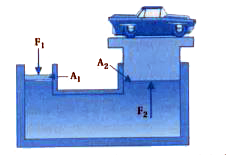Text Solution
Verified by Experts
|
Topper's Solved these Questions
MECHANICAL PROPERTIES OF FLUIDS
KUMAR PRAKASHAN|Exercise SECTION-A Try Yourself (VSQs)|132 VideosView PlaylistMECHANICAL PROPERTIES OF FLUIDS
KUMAR PRAKASHAN|Exercise SECTION - B Numericals|29 VideosView PlaylistMACHANICAL PROPERTIES OF SOLIDS
KUMAR PRAKASHAN|Exercise QUESTION PAPER|11 VideosView PlaylistMOTION IN A STRAIGHT LINE
KUMAR PRAKASHAN|Exercise QUESTION PAPER|11 VideosView Playlist
Similar Questions
Explore conceptually related problems
Knowledge Check
A
B
C
D
Submit
Similar Questions
Explore conceptually related problems
KUMAR PRAKASHAN-MECHANICAL PROPERTIES OF FLUIDS -QUESTION PAPER (SECTION -C)
- Write Pascal's law . Explain its use in hydraulic lift.
04:36
|
Playing Now - Glycerine flows steadily through a horizontal tube of length 1.5m and ...
05:21
|
Play - A U- tube contains water and methlated spirit separated by mercury . ...
03:44
|
Play - What is the excess pressure inside a bubble of soap solution of radius...
11:48
|
Play
